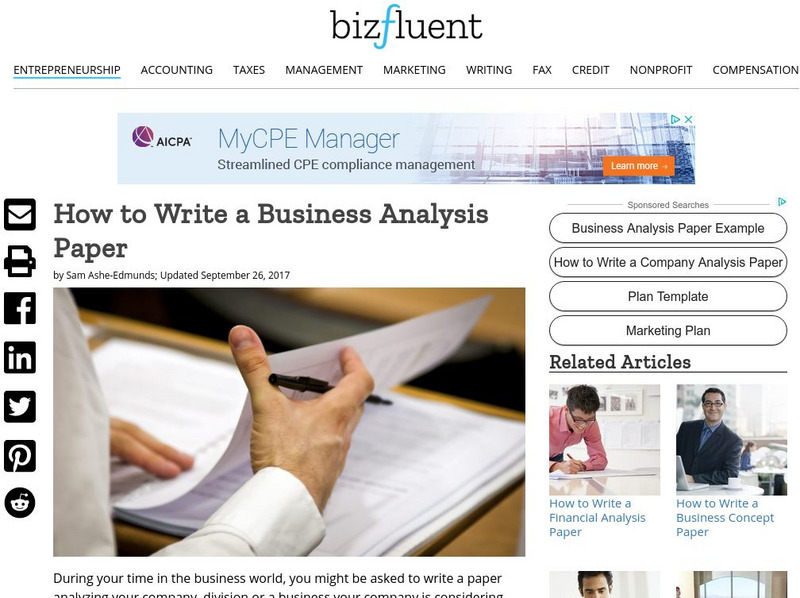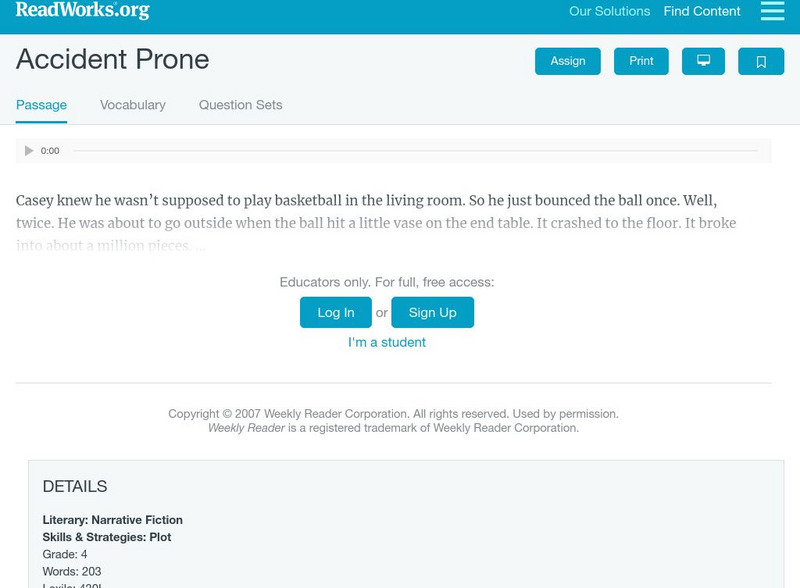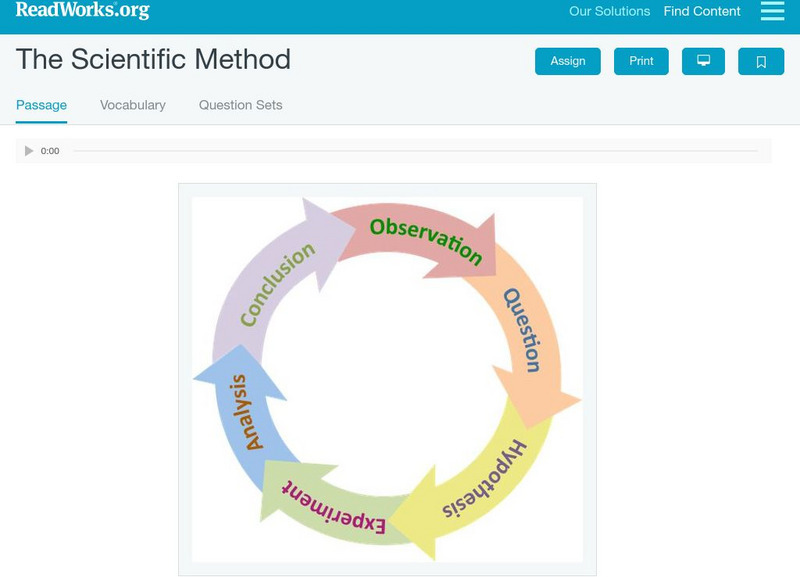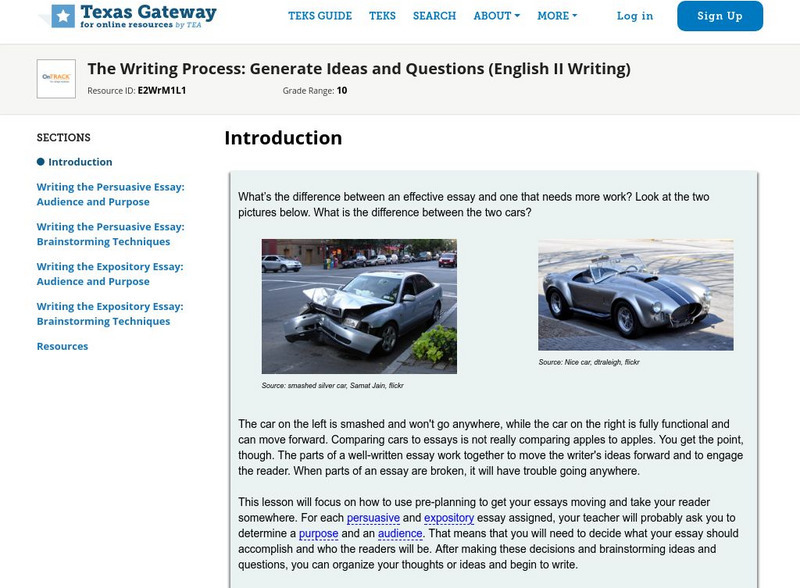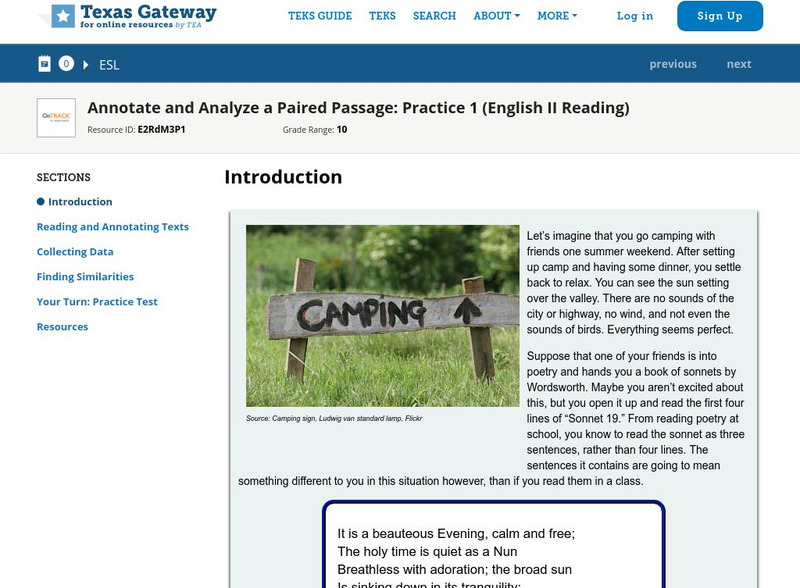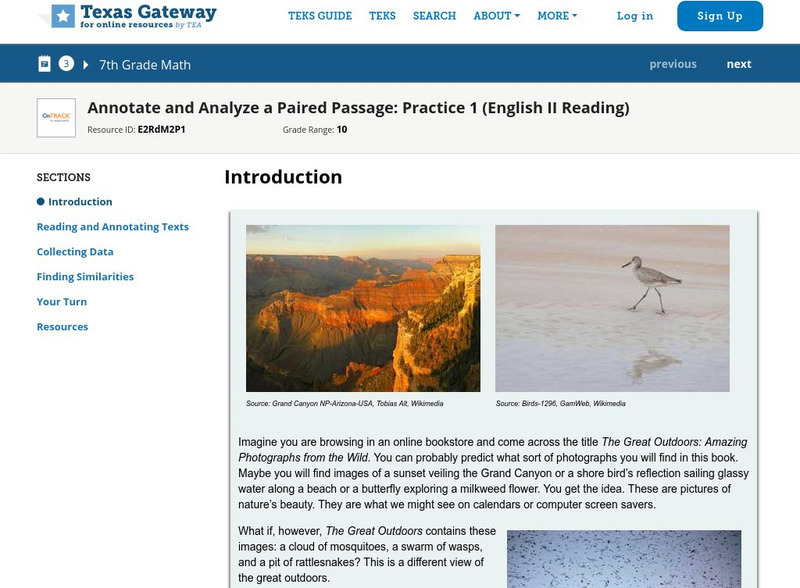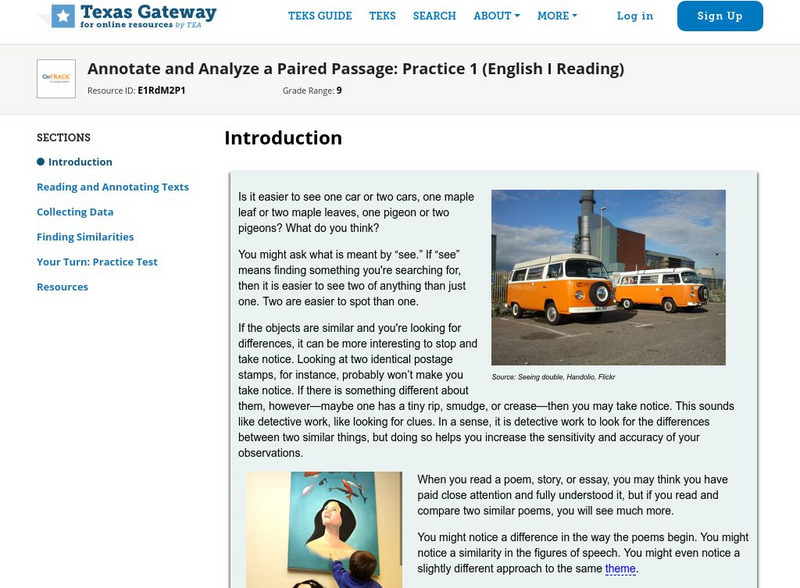Leaf Group
E How: How to Write a Business Analysis Paper
This article by Sam Ashe-Edmunds explains how to write a business analysis paper, an in-depth look at a business or company in terms of strengths, weaknesses, opportunities, threats, finances, employment, and attaining goals.
Read Works
Read Works: In the Night
[Free Registration/Login Required] A literary text about a cat who likes to go hunting at night. A question sheet is available to help students build skills in reading comprehension.
Read Works
Read Works: Accident Prone
[Free Registration/Login Required] This story is an example of fiction and assesses students' understanding of plot. This passage is a stand-alone curricular piece that reinforces essential reading skills and strategies and establishes...
Read Works
Read Works: The Scientific Method
[Free Registration/Login Required] An informational text explaining the five steps of the scientific method. A question sheet is available to help students build skills in reading comprehension.
Annenberg Foundation
Annenberg Learner: Sequence
Listen to an explanation about the series of events in Cinderella. Then look at some pictures where the story's events are all mixed up and put them in the correct order.
Texas Education Agency
Texas Gateway: Analyze Texts With Similar/different Purposes
[Accessible by TX Educators. Free Registration/Login Required] Make complex inferences and use textual evidence such as imagery and figurative language to support understanding.
Texas Education Agency
Texas Gateway: The Writing Process: Generate Ideas and Questions
[Accessible by TX Educators. Free Registration/Login Required] Learn strategies to help you generate questions and ideas about a topic.
Texas Education Agency
Texas Gateway: Annotate and Analyze a Paired Passage: Practice 2
Read and annotate paired texts in order to make inferences, draw conclusions, and synthesize ideas and details using textual evidence.
Texas Education Agency
Texas Gateway: Annotate and Analyze a Paired Passage: Practice 1
Read and annotate paired texts in order to make inferences, draw conclusions, and synthesize ideas and details using textual evidence.
Texas Education Agency
Texas Gateway: Annotate and Analyze a Paired Passage: Practice 1
Read and annotate paired texts in order to make inferences, draw conclusions, and synthesize ideas and details using textual evidence.
Lumen Learning
Lumen: Analysis: The Language of Analytic Assignments
This lesson focuses on understanding the language of assignments that indicate the need or analysis including a list of verbs that denote the need for analysis and assignments that ask you how the parts relate to the whole, how something...
Lumen Learning
Lumen: Analysis: Rhetorical Analysis
This lesson focuses on defining rhetorical analysis and identifying and applying different types of analytic processes. It also provides a practice activity.
Lumen Learning
Lumen: Analysis: Process Analysis
This lesson focuses on process analysis including processes by people, machines, and nature. They can be classified as descriptive and prescriptive. It also includes a practice activity.
Lumen Learning
Lumen: Writing Skills: Audience Analysis
This lesson focuses on audience analysis and recognizing rhetorical approaches to building common ground. A practice activity is provided.
Department of Defense
Do Dea: Real Survival Skills
Learn about process analysis, writing procedurals texts, the steps of the writing process, and cause and effect in this unit. Also, examine patterns of organization in writing. A handy chart shows common organizational patterns which...
Learning Farm
Learning Farm: Ccs: Time, Sequence, and Cause/effect
An automated lesson will engage student's learning how to describe the connection between a series of historical events, scientific ideas or concepts, or steps in technical procedures in a text. An introduction to the concept precedes a...
Quizlet
Quizlet: Literary Elements Definitions
Learn about 32 different literary elements with flashcards, quizzes, and interactive games.
Quizlet
Quizlet: R.3 Analyze How and Why Individuals, Events, or Ideas, Develop/interact
Please align to CCSS.ELA-Literacy.CCRA.R.3 Analyze how and why individuals, events, and ideas develop and interact over the course of a text.
Other
Sas: Exploring Ways Authors Use Text Structures to Convey Meaning
In this lesson, students will explore ways authors use text structures to convey meaning through cause and effect, sequencing, comparison, and more.
Other
Thoughtful Learning: ccss.ela literacy.w.7.3.a
Pick and choose from these lessons and units that focus on narrative writing. Specifically, how to establish a context and point of view, introduce characters, and organize an event sequence.
Better Lesson
Better Lesson: W.3.4: Produce Writing Appropriate to Task and Purpose
Links to 99 lessons and activities that build student skills in standard W.3.4: With guidance and support from adults, produce writing in which the development and organization are appropriate to task and purpose.
Texas Education Agency
Texas Gateway: Synthesize Ideas in Informational/expository Text
[Accessible by TX Educators. Free Registration/Login Required] In this lesson, you will expand on your ability to read texts, synthesize them, and make choices based on the information you read. Finally, you will learn how to use textual...
Texas Education Agency
Texas Gateway: Annotate and Analyze a Paired Passage: Practice 1
In this lesson, you will read and annotate a pair of texts to make inferences, draw conclusions, and synthesize ideas and details using textual evidence. Prepare to get involved in a conversation between you and the two texts you will be...
Texas Education Agency
Texas Gateway: Annotate and Analyze a Paired Passage: Practice 1
In this lesson, you will read and annotate a pair of texts to make inferences, draw conclusions, and synthesize ideas and details using textual evidence. You are going to look at two texts together to better understand them.


